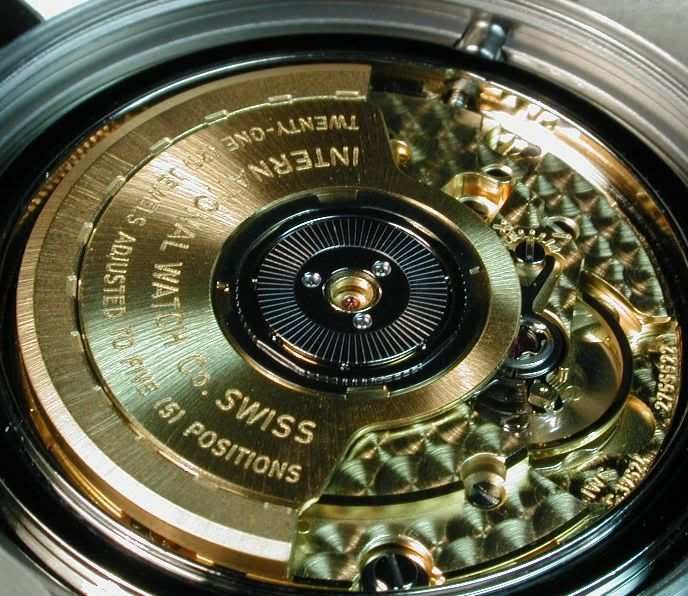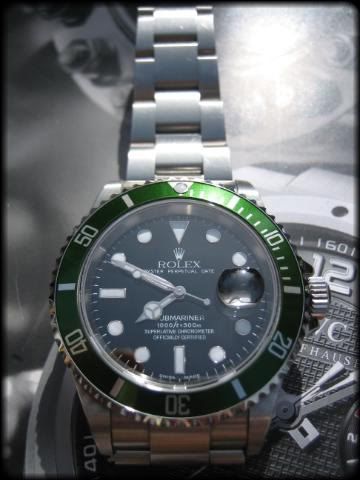I'm now in the surreal position of arguing about modified 2892 movements from two different directions:
http://forums.watchuseek.com/showthread ... 4#poststop
How odd.
However, Doug, has made some good points which I will have a go at responding to:
Firstly, he has risen to my challenge of finding more evidence of weakness. Having spoken to a watchmaker about this I am chastened to repeat his opinion: He compared them to tanks: the 889 is like a WWII German tank, beautifully (over) engineered,
and lovely to work on if you are not in a hurry, but ultimately flawed, in this case due to an slightly gracile mainspring which also has a tendency to wear the winding barrel. Apart from that, he felt they were bulletproof. The 2892 he compared to a Russian tank as it sounds like one, but is infinitely better than it should be. He would not be drawn on whose tanks a 3135 was like.
So I think I just have to accept that there does seem to be some consensus that the 889's mainspring is problematic. I'm not sure that I am happy to go as far as saying 'case closed', but Doug definitely has me on the back foot here. My only response remains that mine has been rock solid. However, I would assume, on no evidence whatsoever, that, if it exists, an IWC rebuild would address this putative weakness as they replace the mainspring on the 2892 even when this isn't needed.
When you consider the price of these movements (as a proportion of the cost of the watch), I doubt the JLC 889 costs IWC considerably more than the modified cost of the ETA 2892.
I agree that they don't cost much more for JLC to
produce but I am prepared to bet a fair bit that IWC paid a significant premium for the 889. However, it sounds like we are nearing a compromise here and I am happy to concede that there will have been a range of factors, including cost and many others, if you are.
However, the assertion that the IWC 2892 is radically different from the ETA one is one point I wish to contend further and which I do not think my argument was addressed. The fact is that the bridges of the 2892 remain brass, it keeps the same regulation system and the same winding bridge and does not show an improvement in reserve, remaining at the same 44hour reserve of the stock movement. This is particularly odd given that it is claimed that the IWC calibre has a longer mainspring. More to the point, 2892 has never been short of torque, being able to run, for example, the DD chrono module in the Speedmaster Reduced with ease.
In short, IWC have made changes where the 2892 is not weak and not made changes where it is. For example the old Eterna style winding system used in the 2892 is robust but disgracefully loud and remains agricultural in the MKXV. Now I am prepared to concede that using properly case hardened parts may make the movement far more resistant to wear in the very long term, but this is a watch for which spares are plentiful and which has an admirable reputation for longevity when serviced correctly.
In the same way, the gold rotor mass must be a red herring, the 2892 has always been more than efficient enough in winding, it's just been too damn loud for such a high end watch. IWC are solving a non existent problem while ignoring real ones.
In short, I totally agree with you that the 2892 is a fine movement. However, it is a movement with compromises. It seems to me that Omega actually address the compromises, while IWC just tidy up around them. The jewel count remains the same, the reserve is unchanged, the winding death rattle remain and the regulation and balance remain merely businesslike. The regulation system on the 889 is incredibly precise, allowing one to home in on perfect regulation with ease (answering another question) while the 3135 has the freesprung balance which, while beyond most home fiddling, does ensure remarkably stable regulation over the long term. However, I am still not convinced that it is a better movement than the 889 as I really cannot see how the stock 2892 has been improved upon beyond addressing wear issues that are really not a problem and finishing it beautifully.
The final quote comes from the little engine that could, which I mentioned before. It's a great review but it does seem to have become rather too central for a single review. There are movement reviews, comparing the 2892 to its Chinese cousin in TZ-UK's classic posts section that feel far more
forensic to me.






 Reply With Quote
Reply With Quote






